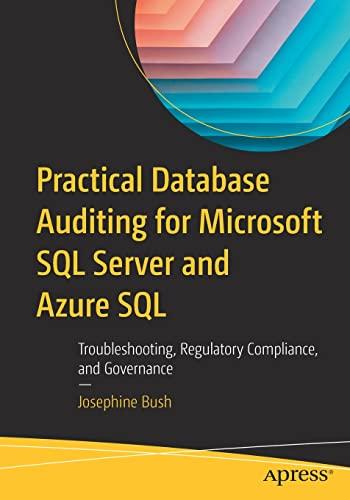Question
1. Open four terminal sessions 1.1 Set the first terminal to read uncommitted. 1.2 Set the second terminal to read committed 1.3 Set the third
1. Open four terminal sessions
1.1 Set the first terminal to read uncommitted.
1.2 Set the second terminal to read committed
1.3 Set the third terminal to repeatable read
1.4 Set the fourth terminal to serializable.
2. Perform insert, delete, update, and select on the s, p, j, and spj tables.
3. When four terminals run simultaneously, the schedule showing dirty read is shown as a screen dump (refer to the textbook example for the schedule), but you must indicate which combination of terminals 1, 2, 3, and 4 shows dirty read. do.4. When four terminals are running simultaneously, the schedule showing non-repeatable read is shown as a screen dump (refer to the textbook example for the schedule), but which combination of terminals 1, 2, 3, and 4 shows non-repeatable read? You have to show it.
5. When four terminals are running simultaneously, the schedule showing phantom read is shown as a screen dump (refer to the textbook example for the schedule), but you must indicate which combination of terminals 1, 2, 3, and 4 shows phantom read. do.
6. When the two terminals are set to serializable, T1 tries to increase both the qty of spj by 10%, and T2 simultaneously tries to decrease the qty supplied by s1 to -10. At this time, take a screen capture of the running status of the two terminals and submit it.
Step by Step Solution
There are 3 Steps involved in it
Step: 1

Get Instant Access to Expert-Tailored Solutions
See step-by-step solutions with expert insights and AI powered tools for academic success
Step: 2

Step: 3

Ace Your Homework with AI
Get the answers you need in no time with our AI-driven, step-by-step assistance
Get Started


